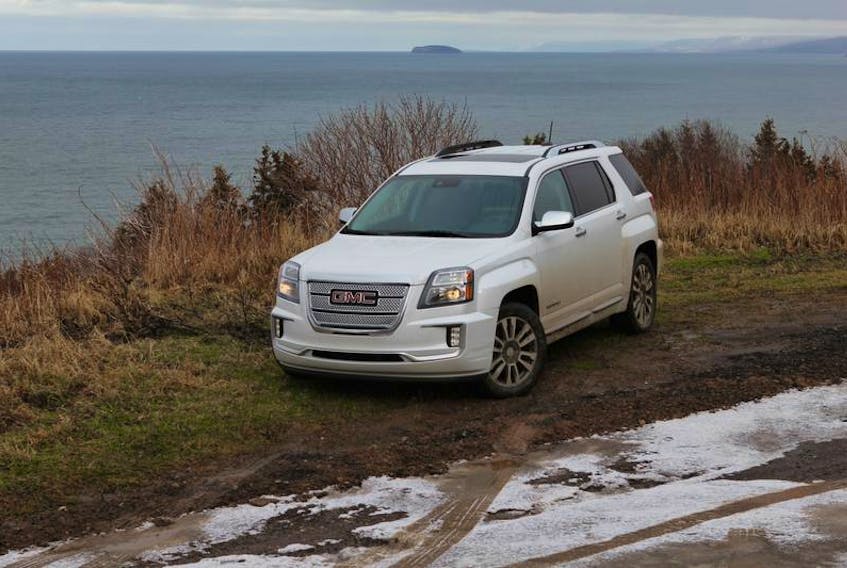My mother called. She wasn’t happy. Her and her husband have been casually browsing used SUV ads on their iPad for a few weeks and the other day, they’d had enough.
Both are frustrated with the lack of standardization across used SUV ads, and a plethora of confusing terminologies that seem to vary between listings, even for separate listings of identical models.
There’s no standard format for used SUV ads, and no standardization of the terms and abbreviations used to describe features and systems applied to said SUVs.
This is making it difficult for mom and husband to cross-shop between ads for similar units.
Further, Mom has sent me at least three used SUV ads that seem to have been filled in by some sort of squirrel, full of inaccurate, inconsistent, or downright confusing information.
Below, I’ll highlight some of mom’s questions, and my responses, in hopes that it clears up any confusion for readers who may be perusing used SUV ads (or used vehicle ads in general).
“Is FWD the same as four-wheel drive? We want all-wheel drive. Or is it four-wheel drive? Or 4x4?”
Mom sent me two ads for identical Mitsubishi Outlanders. One was listed as AWD, the other, 4x4. Depending on various factors (including who fills out the ad), you can typically consider these terms interchangeable.
Four Wheel Drive is commonly designated as 4x4 or 4WD. These mean the same thing. Technically, most SUVs have all wheel drive (AWD), even though some sellers list it as four-wheel drive.
In simple terms, if the listing says AWD, 4x4, or 4WD, then that vehicle has power going to all four wheels. Oh, and FWD means front-wheel drive, not four-wheel drive.
“It says CVT transmission, and zero gears? You need more than zero gears, right?”
Some SUV crossover models use a continually variable transmission (CVT). Sometimes, a vehicle with a CVT transmission will be listed with “zero” gears, or one gear, where most other vehicles have five or six or eight.
Here’s the deal: a CVT transmission is just an automatic transmission. You put it in drive, there’s no clutch pedal, and it drives like a regular automatic.
But, because of how a CVT works, it technically has no gears, so sometimes, ads list zero or one gears. This is not a concern, it’s just how this form of automatic transmission works.
“What is BSM? ACC? LDA?”
These are abbreviations for safety systems. BSM is blind spot monitoring, which alerts you if there’s a vehicle potentially hidden in your blind spot.
ACC means adaptive cruise control, which automatically slows down and speeds up to adjust to changing traffic.
LDA means lane departure alert, which warns you if you’re leaving your lane without a corresponding turn signal.
These abbreviations may vary from automaker to automaker, so just look for the key letters.
For instance, “BS” means blind spot, which could be followed by A (alert), W (warning), M (monitoring) or I (information).
“CC” means cruise control. Adaptive cruise control is ACC. Intelligent cruise control is ICC. Radar cruise control may be listed as RCC. Smart cruise control is also possible. They all do the same thing. Just look for the CC.
Finally, “LD” means Lane Departure. This could be combined with “warning” or “alert,” for LDW or LDA. Same thing. Note that some automakers call it lane keeping assist (LKA).
“Is a crossover the same as an SUV? What about a CUV? And what’s a Jeep? Is a crossover like a Jeep?” (mom likes Jeeps)
God help us all. There’s a confusing nomenclature mishmash possible for virtually identical vehicle styles here. A crossover tends to represent a car-based utility vehicle, like a Chevrolet Equinox or Honda CR-V.
An SUV, technically, represents a larger and more truck-like vehicle, like a Chevrolet Tahoe or Toyota Sequoia.
Typically, an SUV is bigger and better for towing or off-road driving, though many folks toss the terminologies around, willy-nilly.
Are you having supper? Dinner? An evening meal? Similarly, they all mean the same thing. Sort of.
A crossover may be called a crossover utility vehicle (CUV). Some people list them as SUVs.
Others list SUVs as crossovers, or even trucks. Your best bet is to simply assess the size and shape of the vehicle by looking at photos in the ad, or on the web.
And yes, mom: some Jeeps are crossovers, and some Crossovers are like some Jeeps. The nomenclature around these sorts of vehicles can be a real pain.
“How many L/100km do we need?”
Many ads list a figure for L/100km, which represents fuel consumption in terms of litres per 100 kilometres.
A vehicle rated at 7L/100km will use about seven litres of gas for every 100 kilometres it drives.
A vehicle rated at 14L/100km uses about 14, or twice as much. The higher the number, the thirstier the vehicle is.
These ratings simply give shoppers a standardized means of comparing the fuel economy of one vehicle to another. There’s no correct figure.
Note that the L/100km figures may indicate city, highway and / or combined.
This represents fuel consumption in city driving, highway driving, and combined driving.
Compare the figures listed for the type of driving you most often do.









